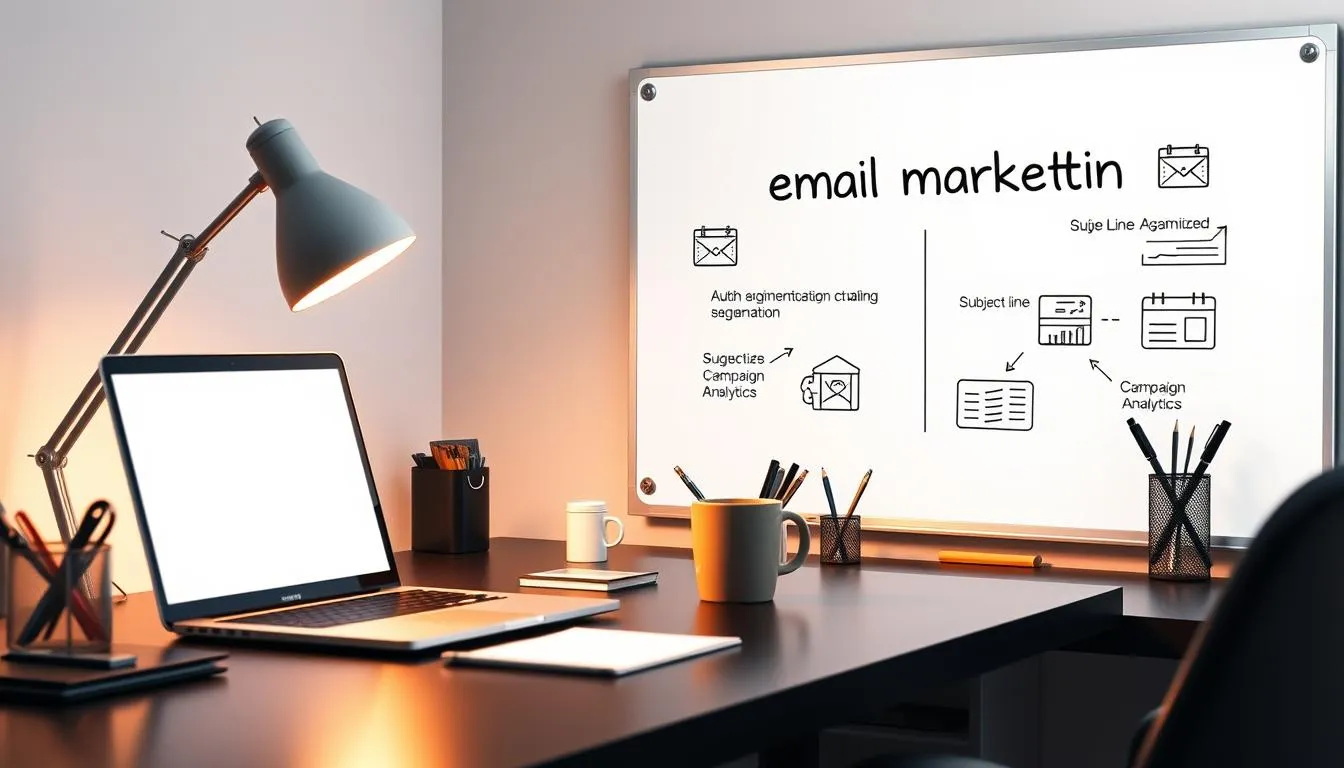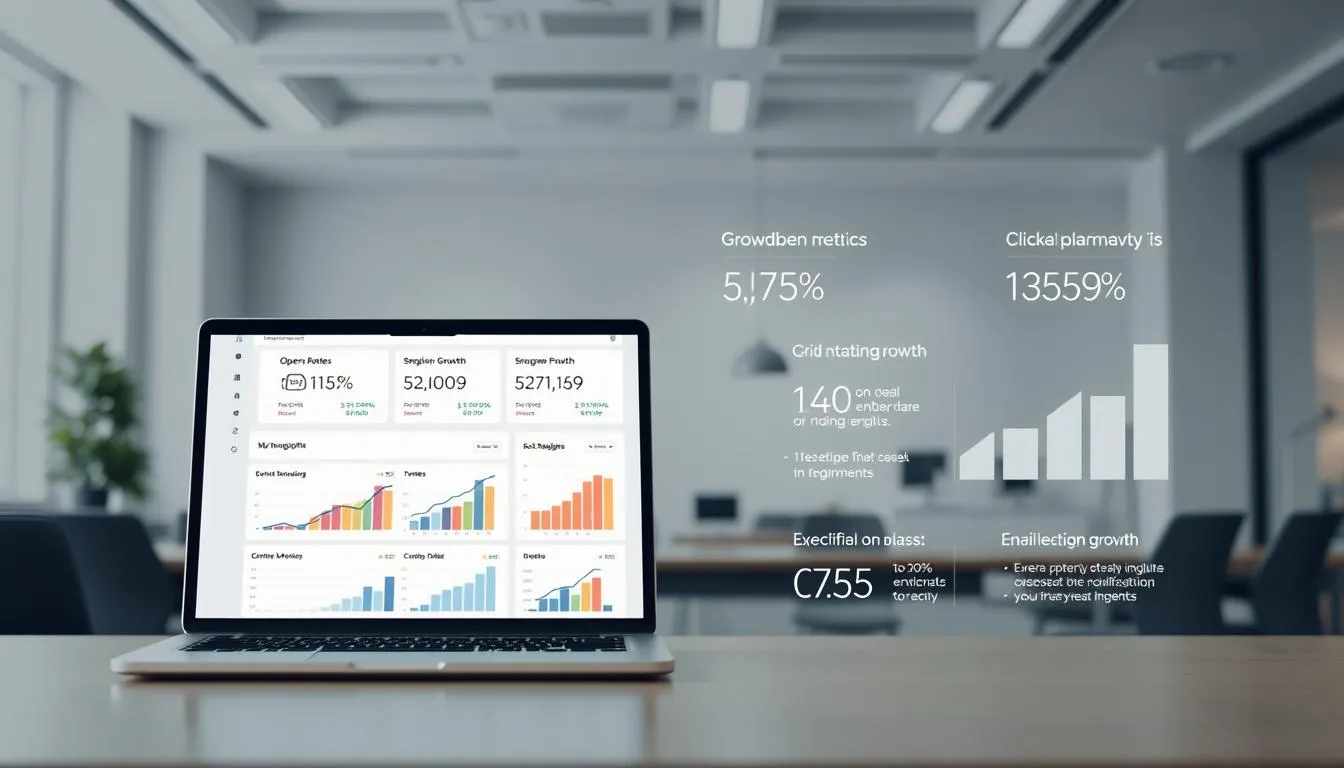Have you ever opened your inbox and immediately felt overwhelmed? Between promotions, newsletters, and automated blasts, it’s easy to wonder if anyone truly reads these messages anymore. But here’s the secret: when done right, this channel still holds unmatched power to connect. I learned this firsthand after revamping a client’s approach—their engagement tripled in just three months.
Research shows this method delivers an average $36 return for every $1 spent. Why? Because it’s not about shouting into the void. It’s about building relationships through thoughtful communication. The best strategies focus on delivering value first—whether through exclusive insights, personalized recommendations, or timely solutions.
Success lies in understanding your audience’s needs at every stage. Instead of generic templates, craft messages that feel like they’re written just for the recipient. Use data to segment your lists and time your sends. Always prioritize permission-based practices to maintain trust.
Key Takeaways
-
Strategic communication drives 3,600% ROI compared to other channels
-
Personalized messages boost open rates by 26% on average
-
Value-first content keeps audiences engaged long-term
-
Segmentation improves click-through rates by 50%
-
Opt-in practices build lasting subscriber trust
Understanding the Basics of Email Marketing
Building trust starts with permission—not just sending emails, but earning attention. This strategy revolves around subscribers who voluntarily opt in to hear from you, creating a two-way street of value exchange. Think of it as curating a VIP club where members get exclusive insights tailored to their interests.

At its core, effective communication delivers consistent wins for your audience. Educational guides, limited-time offers, and personalized updates work best when they solve specific problems. One fitness brand saw a 40% increase in repeat purchases by sharing workout plans that matched subscriber goals.
Balancing creativity with analytics separates good strategies from great ones. Storytelling hooks readers, while metrics like open rates reveal what resonates. A/B testing subject lines or send times turns guesswork into actionable insights.
Success hinges on knowing your audience’s preferences better than they do. Track which content gets clicks, then refine your approach. A kitchenware company boosted engagement by 55% after segmenting subscribers based on cooking skill levels.
This approach isn’t just about sales—it nurtures relationships at every stage. From welcoming new subscribers to re-engaging dormant ones, it’s a versatile tool for long-term growth.
Harnessing the Potential of email marketing campaigns
What if your messages could become your most reliable salesperson? For small teams, strategic communication unlocks growth without draining budgets. Nearly 58% of professionals prioritize revenue growth through this channel, while 45% focus on driving website visits.

Big Impact for Small Teams
Local shops and startups gain equal footing with corporations through targeted outreach. Personalized recommendations based on purchase history or browsing behavior make customers feel understood. One bakery increased repeat orders by 33% using birthday discount codes.
Growing Without Growing Pains
Start with 100 subscribers or 10,000—the system adapts. Automation handles welcome sequences and cart reminders while you sleep. A study by Forrester found businesses earn $2.2M in three years using triggered messages.
| Objective | Marketers Focusing on It | Outcome |
|---|---|---|
| Revenue Growth | 57.8% | $36 ROI per $1 spent |
| website Traffic | 45.2% | 22% higher engagement |
| Customer Retention | 38% | 40% repeat purchases |
Clear metrics reveal what resonates. Track opens for subject line effectiveness, clicks for content relevance. Adjust like a chef tasting soup—small tweaks create big flavor changes over time.
Defining Clear Goals for Your Campaign Strategy
Without a target, even the best strategies fall short. Defining goals is your first step to measurable success. Start by asking: “What do I want this effort to achieve?” Whether it’s boosting website visits or nurturing loyal customers, specificity matters.

Different objectives require tailored approaches. For instance, 57.8% of professionals prioritize revenue growth, while 45.2% focus on driving web traffic. Align your content with these intentions to maximize impact.
| Goal Type | Focus | Key Benefit | Marketers Using |
|---|---|---|---|
| Traffic Generation | Content clicks | Qualified visitors | 45.2% |
| Brand Awareness | Educational resources | Authority building | 43.9% |
| Lead Nurturing | Purchase intent | Conversion support | – |
| Revenue Growth | Customer retention | $36 ROI per $1 spent | 57.8% |
Traffic-focused efforts thrive on curiosity-driven hooks like “See what’s new” or “Get the full story.” For brand visibility, share industry insights that position you as a trusted guide rather than a salesperson.
When guiding leads toward purchases, direct calls-to-action work best. Think “Claim your discount” or “Finish your order.” Existing customers? Reward them with exclusive perks to deepen loyalty.
Track progress using metrics tied to each goal. Clicks reveal content appeal, while repeat purchases signal lasting relationships. Adjust your strategy as you gather data—success evolves with clarity.
Crafting Compelling Subject Lines: The First Impression
Your audience decides to engage before reading a single word. Studies show 47% of recipients open messages based solely on the subject line—making it your make-or-break moment. Brands like Summer Fridays hook readers by hinting at rewards: “Your birthday gift inside…” creates instant intrigue without revealing details.
Great preview text acts like a movie trailer. It teases value while leaving questions unanswered. Reformation mirrors this approach by matching visual themes to their subject cues, creating cohesive experiences from inbox to open.
Tips for Writing Catchy Subject Lines
Start with urgency or curiosity. Phrases like “Last chance” or “You won’t believe…” outperform generic alternatives. Limit length to 60 characters—most devices cut off longer text.
Personalization boosts opens by 26%. Use names or location data when possible. “John, your Chicago discount expires tonight” feels tailored, not templated.
Align tone with your content. A playful brand? Emojis can work. Professional service? Clarity trumps creativity. Always deliver what’s promised to maintain trust.
Test two versions simultaneously. Try questions versus statements, or different emoji placements. One skincare brand saw a 19% lift by switching from “New products inside” to “What’s missing from your routine?”
Designing Engaging Email Content and Visuals
What transforms a forgettable message into one that sparks action? The answer lies in strategic design choices that blend clarity with creativity. Imagine your favorite streaming service’s interface—clean, recognizable, and easy to navigate. That’s the energy your communications need.
Strong copy acts as your foundation. Use short sentences and active verbs like “discover” or “transform.” One study found conversational language increases replies by 34%. Pair this with visuals that reinforce your words—a fitness brand saw 28% more clicks after adding workout demo images.
| Element | Text-Only | Visual Design |
|---|---|---|
| Open Rate | 18% | 27% |
| Click-Through Rate | 3.1% | 5.8% |
| Average Engagement | 22 sec | 41 sec |
Consistency builds recognition. Netflix uses its signature red accents across all communications, making subscribers feel at home. Your color scheme and fonts should mirror your website—this creates a seamless experience.
mobile optimization isn’t optional. 67% of users check messages on phones. Test layouts on multiple screens. Buttons need thumb-friendly spacing, while text requires larger fonts. A travel company reduced unsubscribes by 19% after simplifying their mobile template.
Balance every element like ingredients in a recipe. Too many images slow load times. Too much text overwhelms. Aim for harmony—clear hierarchy, breathing room between sections, and one primary call-to-action.
Personalizing Your Email Campaigns: Segmentation Strategies
Ever received a message that felt like it was written just for you? That’s the magic of segmentation—turning broad outreach into meaningful conversations. By grouping your audience based on real behaviors and preferences, you create relevance at scale.
Data-Driven Segmentation
Smart grouping starts with analyzing patterns. Track what people click, buy, or ignore. Nutrition brand OLLY boosted conversions by 22% using AI to suggest products based on past purchases.
| Segmentation Factor | Method | Impact |
|---|---|---|
| Purchase History | Recommend complementary items | 33% higher open rates |
| Engagement Levels | Re-engage inactive users | 40% more clicks |
| Browsing Data | Send abandoned cart reminders | 28% recovery rate |
Tailoring Content for Different Audiences
New parents need different timing than night-shift workers. Adjust your approach:
-
Use casual language for Gen Z
-
Highlight premium features for enterprise clients
-
Send weekend deals to weekend shoppers
One skincare company split their list by skin type—dry vs. oily—resulting in 19% more repeat purchases. “Automated suggestions now match our manual efforts,” reports their digital lead.
Building and Growing Your Email List
A strong subscriber base forms the foundation of successful communication. Focus on attracting people genuinely interested in your offerings rather than chasing numbers. Quality subscribers engage more, drive better results, and protect your sender reputation.
Offer valuable incentives to encourage sign-ups. Free guides, early access to sales, or exclusive tutorials work well. For example, a cooking blog doubled its list growth by providing printable meal plans in exchange for addresses.
Double opt-in processes add a crucial verification step. While it reduces sign-up speed, it ensures every address belongs to someone who wants your content. This method cuts spam complaints by up to 75% compared to single opt-in systems.
Place sign-up forms where your audience naturally engages. Try embedding them in blog sidebars, checkout pages, or social media bios. A pet supplies store increased subscribers by 40% after adding a pop-up form triggered by exit intent.
Regularly clean your list to maintain health. Remove inactive accounts every 3-6 months and honor unsubscribe requests immediately. This practice keeps engagement metrics high and ensures your messages reach eager eyes.
Timing Your Emails for Maximum Impact
Ever wondered why some messages get opened instantly while others gather dust? Your content could be flawless, but delivery timing determines whether it shines or fades. Research shows messages sent during peak activity windows receive 27% more clicks than those arriving at random hours.
B2B audiences often engage midweek between 10 AM and 2 PM local time. Meanwhile, consumer-focused brands see higher weekend opens after 7 PM. A travel agency boosted conversions by 19% by shifting sends to Friday evenings when subscribers plan getaways.
| Audience Type | Best Days | Peak Hours | Engagement Lift |
|---|---|---|---|
| Corporate Teams | Tue-Thu | 9AM-11AM | 34% |
| Retail Shoppers | Sat-Sun | 6PM-9PM | 28% |
| Freelancers | Mon-Fri | 7PM-10PM | 22% |
automation tools solve time zone puzzles. Schedule welcome sequences to arrive within 15 minutes of sign-up. One SaaS company reduced unsubscribes by 41% using location-based send times.
Test two schedules monthly. Try alternating morning and evening deliveries. Track opens for three weeks—your crowd’s rhythm will emerge. “Our subscribers’ lunch breaks became our golden hour,” shares a meal kit brand’s marketing director.
Integrating automation tools and Technical Best Practices
Imagine having a 24/7 assistant that nurtures relationships while you sleep. Modern automation tools handle repetitive tasks like welcome sequences and birthday offers, freeing you to focus on creative strategy. Platforms like HubSpot track engagement patterns, alerting teams when leads interact with content.
These systems sync seamlessly with CRM software and e-commerce platforms. Customer behavior triggers personalized journeys—from abandoned cart reminders to post-purchase surveys. One fashion retailer saw 31% higher repeat sales after automating style recommendations.
Drag-and-drop editors make professional designs accessible to all skill levels. Templates ensure brand consistency across devices while saving hours of work. “Our team creates polished messages in half the time,” shares a tech entrepreneurs’s CMO.
Analytics dashboards reveal what resonates. Track opens for subject line effectiveness, clicks for content relevance. Adjust your approach like tuning a guitar—small tweaks create harmony. With the right technical foundation, you’ll build connections that feel personal, even at scale.
Useful Resources
For additional insights, check out these valuable resources:
- comprehensive SEO guide - Moz
- marketing best practices - HubSpot
- digital marketing insights - Neil Patel
- SEO and marketing strategies - SEMrush
- Google Ads best practices - Google
FAQ
How can small businesses benefit from email campaigns?
Targeted campaigns help local brands connect directly with their audience. They’re cost-effective, drive repeat purchases, and build loyalty through personalized offers like discount codes or exclusive updates.
What makes a subject line effective?
Keep it short, urgent, and relevant. Use action verbs like “Claim Your 20% Off” or ask questions like “Ready for Summer cashback?” Avoid spammy phrases and test variations with tools like Mailchimp’s A/B testing.
Why is segmentation important for engagement?
Grouping subscribers by behavior (e.g., abandoned carts) or demographics lets brands send tailored content. For example, Sephora uses purchase history to recommend products, boosting open rates by 25%.
How do I grow my subscriber list organically?
Offer incentives like free guides or early access in exchange for sign-ups. Place opt-in forms on landing pages, social profiles, and checkout screens. Always get explicit consent to avoid spam flags.
When’s the best time to send emails?
Mid-morning (10 AM) or early afternoon (1–3 PM) on weekdays often work well. However, test timing using analytics tools. Fitness brand Peloton saw higher clicks by scheduling workout reminders at 5 AM for early risers.
Which automation tools improve campaign efficiency?
Platforms like Klaviyo or HubSpot automate welcome sequences, cart recovery, and loyalty rewards. For example, Brooklinen uses drip campaigns to nurture leads, resulting in 30% faster conversions.
